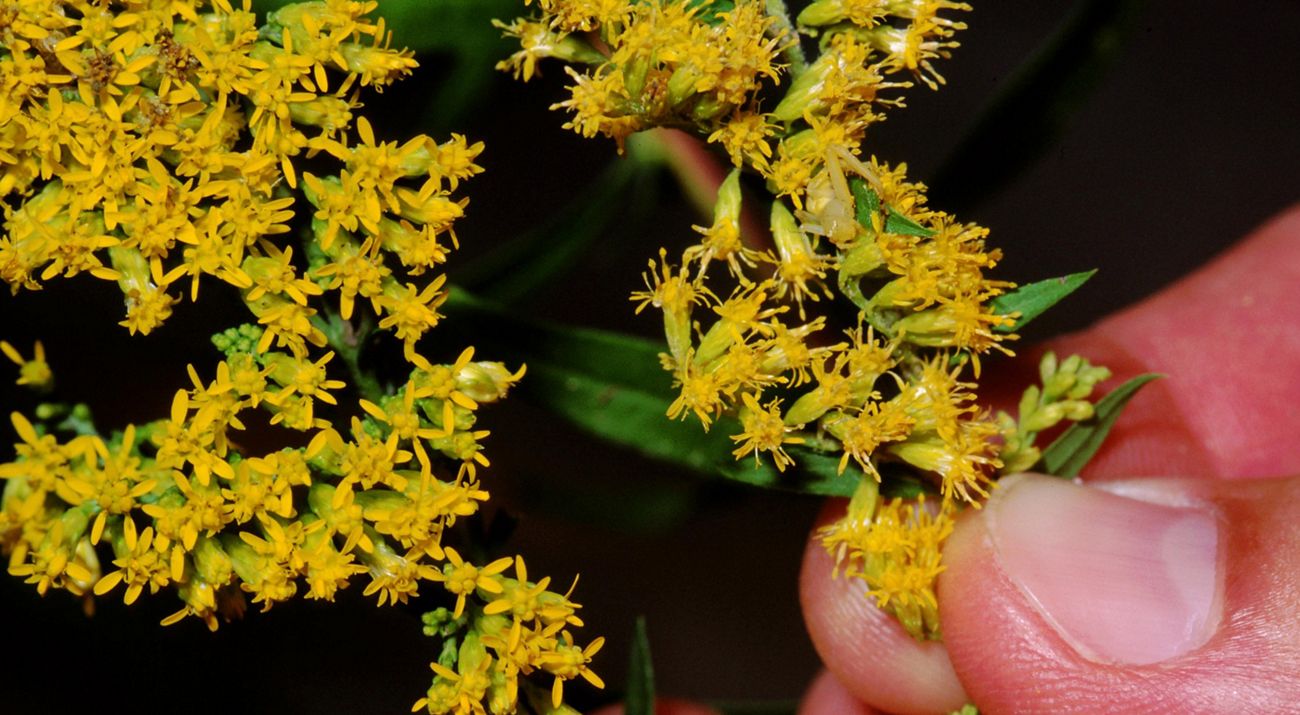
Make a difference in Indiana
Help us conserve the lands and waters on which all life depends.
Donate to IndianaWhat is Short's goldenrod?
Short's goldenrod is a rare perennial plant known for its bright yellow flowers. The plant stands up to two feet tall with narrow leaves alternately arranged on the stalk. The longer leaves (up to four inches long) are found near the middle of the stem. Look for them in the middle of August to early November when the flowers are in bloom.
Where does Short's goldenrod grow?
Short’s goldenrod prefers habitats near riverbanks, cedar glades and dry, open pastures. Although they prefer locations where full sunlight is available, they can also persist in shady areas going through succession from pasture and openings in oak and hickory forests.
A short history of Short's goldenrod
According to the Center for Plant Conservation, Short’s goldenrod was discovered by Dr. Charles Wilkins Short near Rock Island, Kentucky in 1840.
Unfortunately, the construction of a dam near the Falls of Ohio River (between Clarksville, Indiana & Louisville, Kentucky) dramatically affected this particular goldenrod’s population, and for decades after the initial discovery, the species was considered extinct. That is, until renowned ecologist Lucy Braun found several small groupings of the yellow flowers in eastern Kentucky in 1939.
For more than 60 years, Short’s goldenrod was thought to exist in the Bluegrass State alone, but this would be proven false. In 2002, The Nature Conservancy, in a cooperative project with the Indiana Department of Natural Resources, was working on an inventory of the natural area within the Blue River watershed.
To many people’s surprise, DNR ecologists found Indiana’s first population of Short’s goldenrod while working on that project.
"Oh Give Me a Home, Where the Buffalo Roam..."
The appearance of Short’s goldenrod in Indiana is quite puzzling. Ecologists are not sure how long the rare species has been in the state, but they do know how it got here: bison.
According to the U.S. Fish and Wildlife Services, the locations in Kentucky known to harbor Short’s goldenrod are connected by a buffalo trace that also extended across Indiana’s Blue River.
Lucy Braun and other ecologists believe that bison were able to transport seeds via the mud-caked on the bison's hair. While goldenrod seeds are normally dispersed via wind, there is no evidence that Short’s goldenrod used this method to expand its range. In fact, the historic range of Short's goldenrod is thought to be related to the open lands created by bison and natural wildfires, not wind dispersion.
Before settlement and the consequent land development, Short’s goldenrod was found throughout the Midwest. Changes in vegetation due to fire suppression threaten populations in Kentucky and Indiana. The plant has been listed as federally endangered since 1985. Therefore it is important to protect the lands surrounding the existing populations and to also take care when visiting the areas that are havens for Short's goldenrod.
Buffalo Trace
The Buffalo Trace (also known in Indiana as the Vincennes Trace), extends through southern Indiana between Louisville, Kentucky, and Vincennes, Indiana. What began as a natural migration route for American bison (often miscalled 'buffalo') from the grasslands and salt licks of Kentucky to the prairies of Illinois became a Native American trail. Later the early American settlers used the Buffalo Trace to move livestock, facilitate commerce between Louisville and Vincennes and ultimately to settle the Northwest Territory. Lewis and Clark, George Rogers Clark, Abraham Lincoln and Benjamin Harrison traveled sections of this road. Today it is part of the newly designated Historic Pathways National Scenic Byway.
Where to find Short's goldenrod
In Indiana: Short’s goldenrod is around the Blue River, located in Crawford, Harrison and Washington counties—considered to be one of the most biologically diverse areas in Indiana. The plants are found embedded in fissures in limestone and surrounded by other karst features.
In Kentucky: Blue Licks Battlefield State Park of Robertson County was dedicated as a nature preserve in 1981 in order to better protect Short’s goldenrod. The endangered species has seen a significant increase in the area due to more open spaces created by prescribed fires and cedar removal.
Short’s goldenrod can also be found at TNC's Buffalo Trace Preserve, located near Blue Lick Battlefield State Park in Kentucky as are the other dozen or so sites harboring the rare plant.
